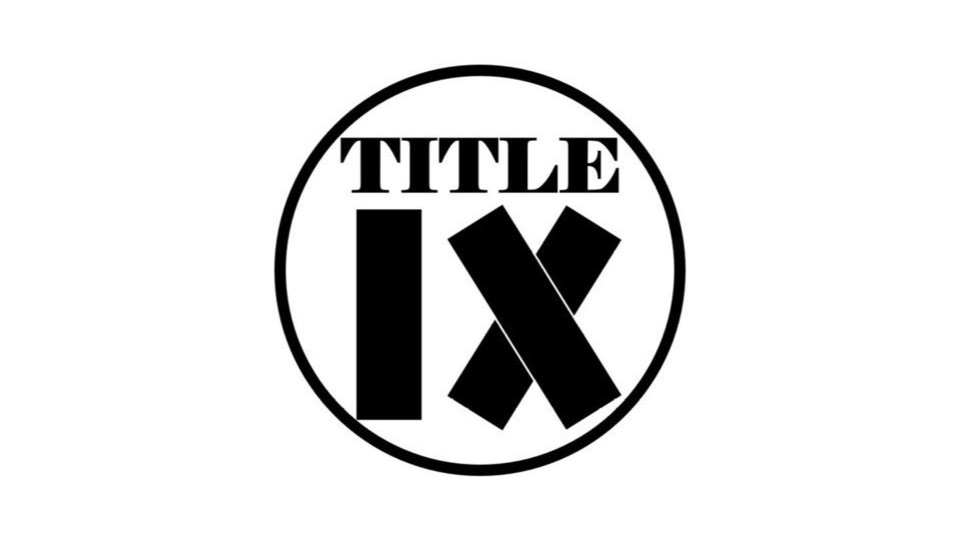In 2012 then-president Obama remarked that “More women as a whole now graduate from college than men. This is a great accomplishment—not just for one sport or one college or even just for women but for America. And this is what Title IX is all about.”
Indeed, that is what Title IX has been all about for the past several decades. But as Bob Dylan sang not too long ago, the times are changing.
Gender-specific scholarships are in the news lately. As we should all know by now, female students are overwhelmingly favored when it comes to financial aid. They receive nearly all gender-specific scholarships as a percentage of the total. In addition, they are more likely to be eligible for scholarships since they continue to receive (as they have for decades) higher grades in all school subjects, as confirmed by a published meta-analysis of 308 studies,
As the National Center for Education Statistics has well documented, significant disparities in graduation rates have emerged across all major degree tiers. You might think that schools would systematically take the initiative to tap the brakes and spend some time re-balancing things. Unfortunately, this has yet to occur.
The inevitable conclusion is that others will start taking their own initiative to “poke” them about the issues. In addition, the pokes will increase in severity and frequency, like a light rain leading into a downpour.
A newsworthy poke has just occurred at the University of Minnesota. A recent article headline in the TwinCities Pioneer Press, a local paper, states:
“Anti-male discrimination complaint gets UMN to change scholarship rules.”
From the article:
The University of Minnesota has changed the eligibility criteria for two women-only scholarships and is reviewing other awards in response to a complaint of anti-male discrimination. Mark Perry, an economics and finance professor at the University of Michigan-Flint, has made it his “lifelong mission” to stamp out anti-male discrimination in education.
I love this man already. Discrimination is easy to find in higher ed. It manifests itself in forms both large and small, as further cited by the Press:
In the past three years, he has pushed Michigan State University to allow men into the women’s lounge at its student union and worked to change who’s eligible for women-only awards and programs at numerous colleges.
Is it a big thing that women have their own lounge? Perhaps, perhaps not – depending on your perspective. To me, the bigger issue is the lack of consistency our culture and institutions apply to these things. With women’s issues, we tend to be highly sensitive to any bias against them, and oblivious (often willfully) to any bias in their favor.
The article continues:
A University of Minnesota graduate, Perry complained to his alma mater in June about three awards he found online for “women-identified students.” The U informed him Wednesday that they’ve removed the gender-specific criteria from two scholarships. A third scholarship is under review, and the U will stop administering it if it’s not opened up to other genders, Title IX Coordinator Tina Marisam wrote.
In response to an interview request, the U released a statement Friday attributed to Marisam:
“The University is committed to offering access and opportunity to individuals of all gender identities. The University regularly reviews the selection criteria for scholarships to ensure, among other things, that they are consistent with evolving understandings of gender identity and laws protecting against discrimination based on gender identity,” it read.
Of course, the last paragraph is a kind of stock statement used as a closing statement for any Title IX event. Regardless, a noteworthy change has occurred here. With persistence, Dr. Perry’s efforts were successful. Determination yields results.
How was Dr. Perry able to do this, even though he is not employed at or attending UMN? Writing for the American Enterprise Institute, he explains that even if you are “not filing a lawsuit, but merely asking for a Title IX investigation of university programs that may be in non-compliance, you do not need ‘legal standing,’ i.e., you do not need to have personally experienced gender discrimination.”
And now to play devil’s advocate: what’s the difference between these scholarships, and scholarships offered to male students? Haven’t we advocated that male students should receive scholarships in the past? It’s a good question, especially considering that we have historically housed the world’s only database of scholarships for male students.
The differences are both technical and ethical.
Technically speaking, the scholarships offered to young men are private scholarships paid for by private funds and administered by private foundations. By contrast, the scholarships offered to these women were administered by a public university, meaning that student funds went into the administration of it. In particular, the scholarships were administered by the UMN Women’s Center.
As should go without saying, there is no men’s center on campus.
Ethically speaking, there’s nothing wrong with private scholarships. Young women still receive the overwhelming majority of those anyway, despite it being nearly half a century that they significantly underachieved relative to young men in a broad academic sense.
What’s next?
What do you think will happen to these scholarships?
- Will men start receiving them?
- Will the UMN Women’s Center ensure that somehow women will continue to always get them?
- Will the scholarship close down because those who historically funded it generally have no desire to see its funds benefit male students?
Time will tell.
Thank You for Reading
If you like what you have read, feel free to sign up for our newsletter here:
About the Author
Related Posts
2 Comments
Comments are closed.
In 2012 then-president Obama remarked that “More women as a whole now graduate from college than men. This is a great accomplishment—not just for one sport or one college or even just for women but for America. And this is what Title IX is all about.”
Indeed, that is what Title IX has been all about for the past several decades. But as Bob Dylan sang not too long ago, the times are changing.
Gender-specific scholarships are in the news lately. As we should all know by now, female students are overwhelmingly favored when it comes to financial aid. They receive nearly all gender-specific scholarships as a percentage of the total. In addition, they are more likely to be eligible for scholarships since they continue to receive (as they have for decades) higher grades in all school subjects, as confirmed by a published meta-analysis of 308 studies,
As the National Center for Education Statistics has well documented, significant disparities in graduation rates have emerged across all major degree tiers. You might think that schools would systematically take the initiative to tap the brakes and spend some time re-balancing things. Unfortunately, this has yet to occur.
The inevitable conclusion is that others will start taking their own initiative to “poke” them about the issues. In addition, the pokes will increase in severity and frequency, like a light rain leading into a downpour.
A newsworthy poke has just occurred at the University of Minnesota. A recent article headline in the TwinCities Pioneer Press, a local paper, states:
“Anti-male discrimination complaint gets UMN to change scholarship rules.”
From the article:
The University of Minnesota has changed the eligibility criteria for two women-only scholarships and is reviewing other awards in response to a complaint of anti-male discrimination. Mark Perry, an economics and finance professor at the University of Michigan-Flint, has made it his “lifelong mission” to stamp out anti-male discrimination in education.
I love this man already. Discrimination is easy to find in higher ed. It manifests itself in forms both large and small, as further cited by the Press:
In the past three years, he has pushed Michigan State University to allow men into the women’s lounge at its student union and worked to change who’s eligible for women-only awards and programs at numerous colleges.
Is it a big thing that women have their own lounge? Perhaps, perhaps not – depending on your perspective. To me, the bigger issue is the lack of consistency our culture and institutions apply to these things. With women’s issues, we tend to be highly sensitive to any bias against them, and oblivious (often willfully) to any bias in their favor.
The article continues:
A University of Minnesota graduate, Perry complained to his alma mater in June about three awards he found online for “women-identified students.” The U informed him Wednesday that they’ve removed the gender-specific criteria from two scholarships. A third scholarship is under review, and the U will stop administering it if it’s not opened up to other genders, Title IX Coordinator Tina Marisam wrote.
In response to an interview request, the U released a statement Friday attributed to Marisam:
“The University is committed to offering access and opportunity to individuals of all gender identities. The University regularly reviews the selection criteria for scholarships to ensure, among other things, that they are consistent with evolving understandings of gender identity and laws protecting against discrimination based on gender identity,” it read.
Of course, the last paragraph is a kind of stock statement used as a closing statement for any Title IX event. Regardless, a noteworthy change has occurred here. With persistence, Dr. Perry’s efforts were successful. Determination yields results.
How was Dr. Perry able to do this, even though he is not employed at or attending UMN? Writing for the American Enterprise Institute, he explains that even if you are “not filing a lawsuit, but merely asking for a Title IX investigation of university programs that may be in non-compliance, you do not need ‘legal standing,’ i.e., you do not need to have personally experienced gender discrimination.”
And now to play devil’s advocate: what’s the difference between these scholarships, and scholarships offered to male students? Haven’t we advocated that male students should receive scholarships in the past? It’s a good question, especially considering that we have historically housed the world’s only database of scholarships for male students.
The differences are both technical and ethical.
Technically speaking, the scholarships offered to young men are private scholarships paid for by private funds and administered by private foundations. By contrast, the scholarships offered to these women were administered by a public university, meaning that student funds went into the administration of it. In particular, the scholarships were administered by the UMN Women’s Center.
As should go without saying, there is no men’s center on campus.
Ethically speaking, there’s nothing wrong with private scholarships. Young women still receive the overwhelming majority of those anyway, despite it being nearly half a century that they significantly underachieved relative to young men in a broad academic sense.
What’s next?
What do you think will happen to these scholarships?
- Will men start receiving them?
- Will the UMN Women’s Center ensure that somehow women will continue to always get them?
- Will the scholarship close down because those who historically funded it generally have no desire to see its funds benefit male students?
Time will tell.
Thank You for Reading
If you like what you have read, feel free to sign up for our newsletter here:
About the Author
Related Posts
2 Comments
-
“since they continue to receive (as they have for decades) higher grades in all school subjects”
Wasn’t always true. P-12 curricula and methods of delivery were revised in the eighties and nineties with an intention to shackle boys. It worked.
-
The reality that older women still seem to think that it is women who are the hard done by ones, as do older men, speaks to a blindness that is extremely dangerous. It is that this will not be seen in the end as a question of being misinformed, but rather that mom did not care as long as it was son who was hurt and dad, being too blind to question.
Leaves a disaster for daughter, who is likely to be seen as likely to be like mom. Mom’s generation changed family law as well. That is in effect daughter is left with a situation where she is seen as not caring, and thus not trustworthy, and with contract that all knows she cannot be held to. Really a terrible thing to do to your sons directly, and to your daughters by poisoning the well.
-
Comments are closed.
More from Title IX for All
Accused Students Database
Research due process and similar lawsuits by students accused of Title IX violations (sexual assault, harassment, dating violence, stalking, etc.) in higher education.
OCR Resolutions Database
Research resolved Title IX investigations of K-12 and postsecondary institutions by the Department of Education’s Office for Civil Rights (OCR).
Attorneys Directory
A basic directory for looking up Title IX attorneys, most of whom have represented parties in litigation by accused students.







“since they continue to receive (as they have for decades) higher grades in all school subjects”
Wasn’t always true. P-12 curricula and methods of delivery were revised in the eighties and nineties with an intention to shackle boys. It worked.
The reality that older women still seem to think that it is women who are the hard done by ones, as do older men, speaks to a blindness that is extremely dangerous. It is that this will not be seen in the end as a question of being misinformed, but rather that mom did not care as long as it was son who was hurt and dad, being too blind to question.
Leaves a disaster for daughter, who is likely to be seen as likely to be like mom. Mom’s generation changed family law as well. That is in effect daughter is left with a situation where she is seen as not caring, and thus not trustworthy, and with contract that all knows she cannot be held to. Really a terrible thing to do to your sons directly, and to your daughters by poisoning the well.